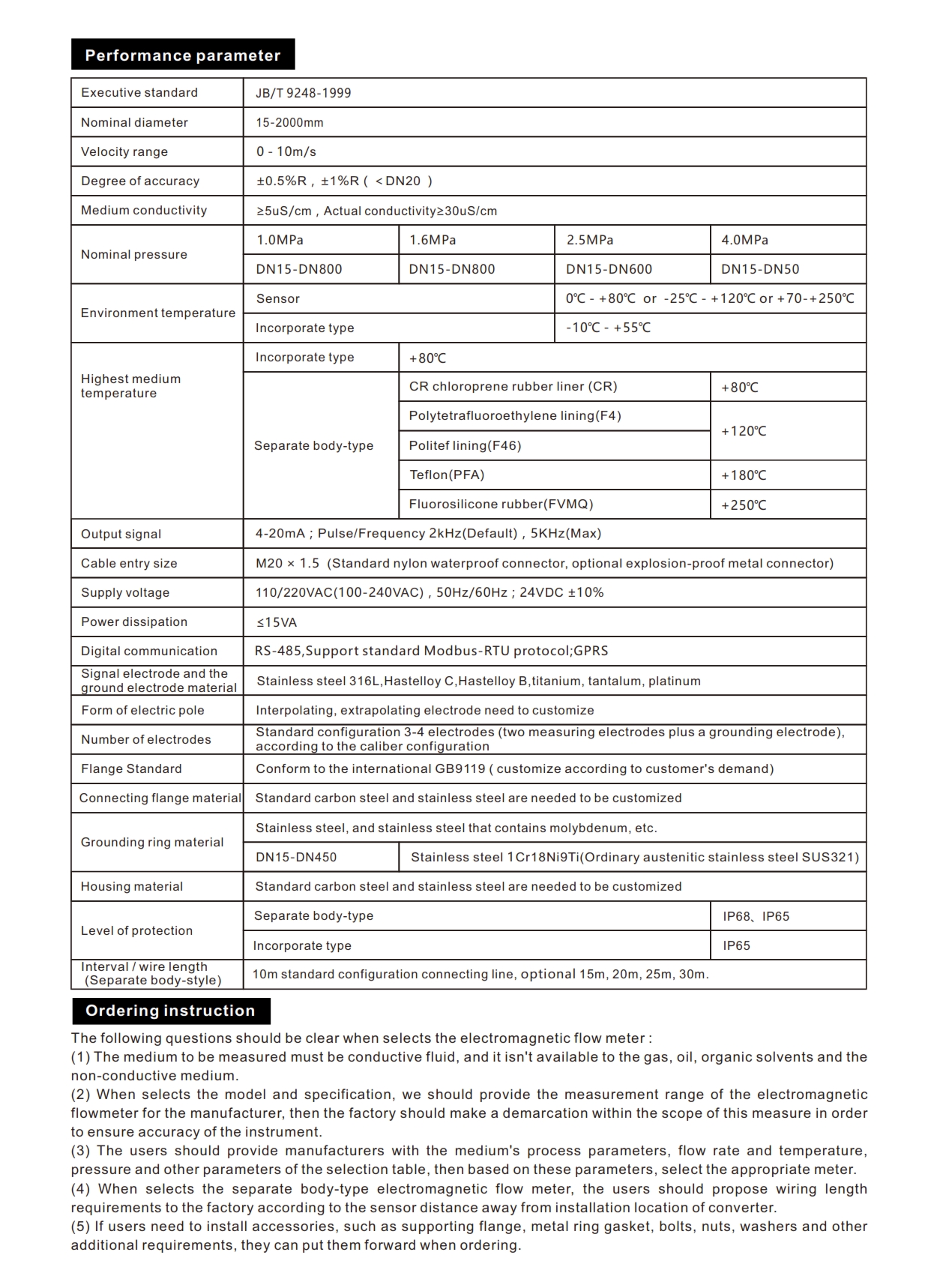Measuring Instruments
Magnetic Flowmeter
FT Magnetic Flowmeter
Design, sizing and manufacturing of magnetic flowmeters customized for corrosive and acidic fluids.
(Magnetic Flowmeter 98% Sulfuric Acid with PFA Liner and Tantalum Sensor)
In the past few decades, after the invention of electromagnetic flowmeters technology, other technologies such as ultrasonic flowmeters
Ultra Sonic Flow Meters, Turbine Flow Meters, Turbine Flow Meters, and so on. But none of these technologies have ever been able to match the readings of electromagnetic flowmeters accurately and reliably. It is quite obvious because the velocity is different in different parts of the tube cross section (fluid profile), the actual velocity at each cross-section, the average velocity of all its points. The reason for the high accuracy of the magnetic meters is that the measured instantaneous flow is the instantaneous instantaneous mean of millions of points inside the cylinder of the meter, which are constantly being measured. For example, in an ultrasonic flowmeters with two sensors, the measured flow rate is always the average of the different points on the signal path between the two sensors, not the points inside the total volume of the tube. As a result, the best accuracy of ultrasonic flowmeters with two sensors is 1 ± 3% of the maximum full scale readout (FS), while the accuracy of the electromagnetic flowmeters is better than 5 /. ± 2 /. ±%.
 |
 |
The principles of measurement in electromagnetic flowmeters are according to Faraday's law. As a rule, any conductive object that disconnects a magnetic field will be induced inside the voltage object, which will be proportional to the magnitude of the magnetic field, the angle of the object of the conductor with the magnetic field, and finally the passage of that object from the inside of the field. Now, due to the fact that the field strength and the angle of impact are constant, the voltage induced inside the conductor material will be in proportion to the velocity of the fluid flow. So in operation, electromagnetic flowmeters and other flowmeters such as ultrasonic and so on, speedometer
Are. Depending on the speed measured and the flowmeter section, the amount of transferred volume is calculated according to the Q = VS equation.
Assuming that the speed is in m / s and the cross-section is in m2, then, according to the above equation, m3 / s = m2 × m / s is the transfer volume or discharge (Q) in m3 / s. Due to the application of different coefficients, different flow units such as m3 / h, Lit / min, Lit / s and ... can be obtained from the flowmeter. In some materials, one can use a flow meter as a transient mass measurement according to the volumetric coefficients.
The units used in this mode are ton / h, kg / h, kg / s, g / s and ....
- مدیر سیستم
- Measuring Instruments
- Hits: 4997



Comments
RSS feed for comments to this post